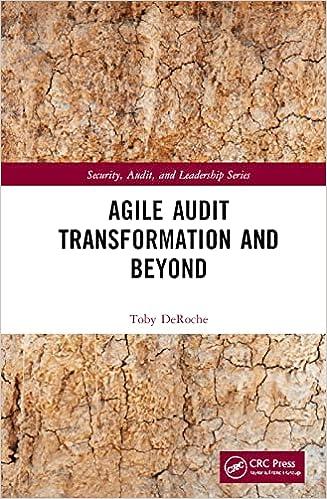Lauder Company manufactures and distributes various fixtures used primarily in new building construction. At the company's Bayside plant, Lauder produces two models of one widely used fixture designated by model names LC-20 and LC-50. Currently, the Bayside plant uses direct labor-hours to allocate manufacturing overhead costs to products. The vice president-manufacturing (VP-M) at Lauder has recently been considering updates to the company's costing systems as a way to ensure that managers had the best information available for decision making. However, rather than update throughout the entire firm, the VP-M and CFO agreed to test an ABC system. Because of its size and focus, the Bayside plant was selected for the experiment. An ABC study team, consisting of both plant and corporate employees was formed to propose an ABC system and compare the product costs with those reported by the current system. Based on the experiment, the executives at Lauder will decide whether to roll out the new cost system to the entire company. The study team identified four cost pools into which the manufacturing overhead costs could be grouped. There was a great deal of discussion about both the pools and the cost drivers. The final system selected consisted of the following pools and drivers. The costs were based on the forecasts for the coming year. Data for production of the two products at the Bayside plant for the coming year of operations follows: All direct labor at the Bayside plant is paid $35 per hour. Kensington Electronics (KE) is a wholly owned subsidiary of CWD Enterprises, a global manufacturing company. Unlike most CWD companies, KE uses a traditional costing system to compute product costs. After the last review by CWD staff, the financial management at KE decided to consider switching to activity-based costing. The controller's staff at KE has identified classified manufacturing overhead costs for the next quarter into four overhead cost pools. They also identified an appropriate cost driver for each pool. The company manufactures two basic products, which are components of navigation systems. The products are the NAV1 and NAV1AV. Although similar, the NAV1-AV uses upgraded materials. In addition, the NAV1-AV needs to be certified for use in aircraft navigational equipment. All units produced are tested, but the tests are more extensive for the NAVI-AV model. The following are data for production for the next quarter: Required: a. The current cost accounting system charges overhead to products based on machine-hours. What unit product costs will be reported for the two products if the current cost system continues to be used? b. What are the cost-driver rates for the four cost pools identified by the controller's staff? d. What unit product costs will be reported for the three products if the ABC system proposed by the controller's staff is adopted? e. How would the activities identified by the controller's staff be classified in terms of the levels of the cost hierarchy? Required: a. The current cost accounting system charges overhead to products based on machine-hours. What unit product costs will be reported for the two products if the current cost system continues to be used? b. What are the cost-driver rates for the four cost pools identified by the controller's staff? d. What unit product costs will be reported for the three products if the ABC system proposed by the controller's staff is adopted? e. How would the activities identified by the controller's staff be classified in terms of the levels of the cost hierarchy? Complete this question by entering your answers in the tabs below. Compute the totals of the cost driver rates shown below. Note: Round "Packaging and shipping" answer to 2 decimal places









